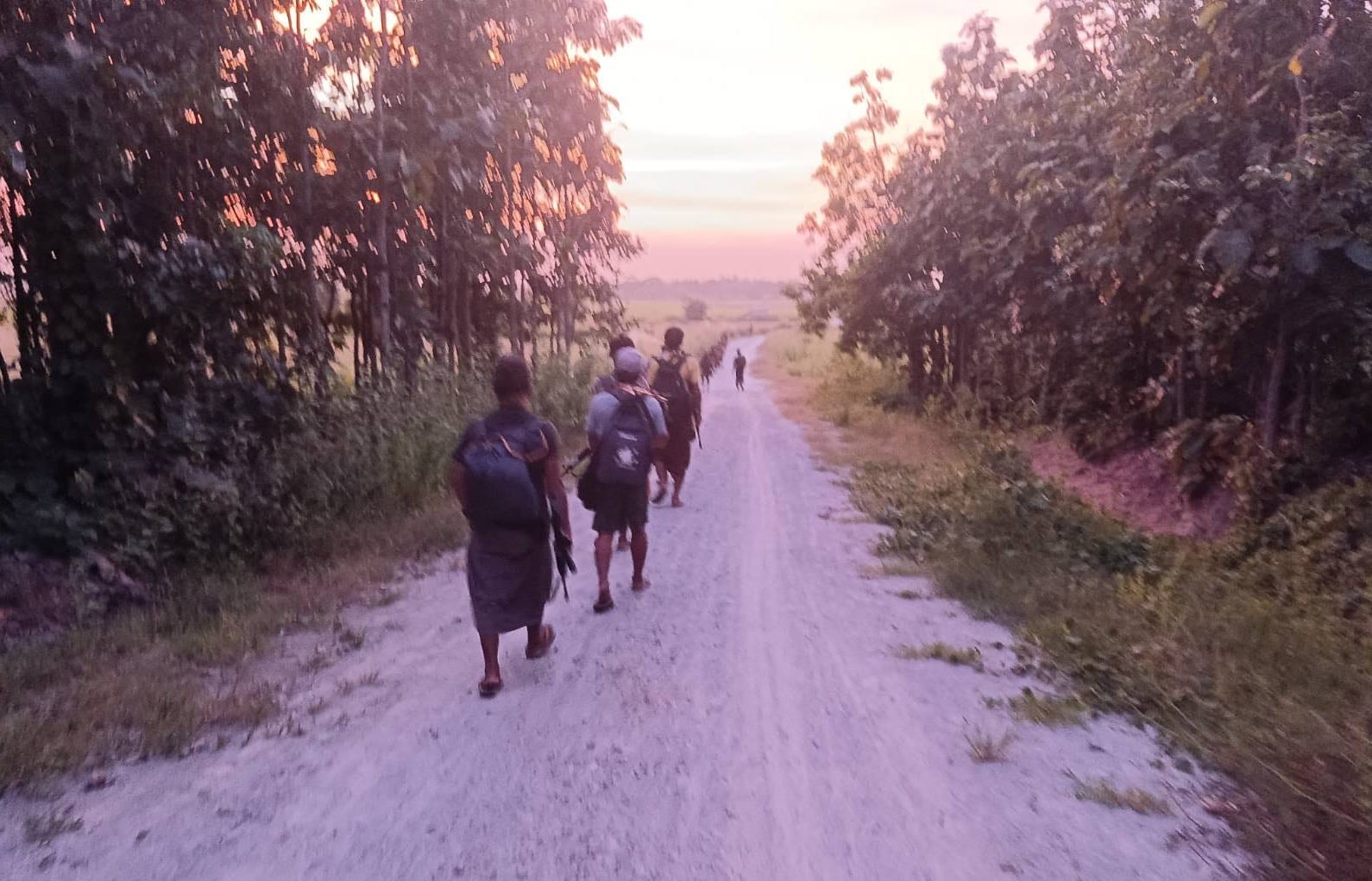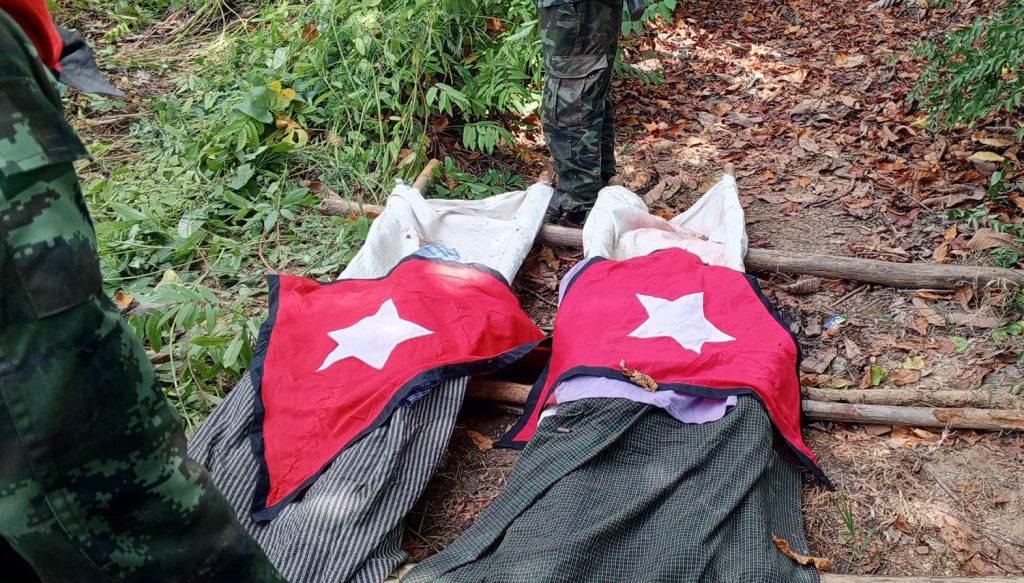The regime has been trying for months to push back resistance forces operating in the area just 50 miles from its capital
Aung ZayNovember 23, 2023

Junta attacks have forced more than 4,000 people to flee their homes in Bago Region’s Yedashe Township since late last week, according to sources in the area just 50 miles south of Naypyitaw.
The attacks began last Friday, after a clash with local resistance forces the day before reportedly left dozens of junta soldiers dead.
Since then, residents of at least eight villages east of the Sittaung River have fled to escape airstrikes and shelling by troops stationed in Swar, a town near Bago Region’s border with the Naypyitaw Union Territory.
“The junta army has destroyed some of the villages with their heavy weapons. We can’t live in them anymore,” said one local woman who spoke to Myanmar Now on condition of anonymity.
At least three of the villages—Na Kyat, Inn Gyi Pauk, and Si Paing—are now completely empty, according to local relief workers.
Last Thursday’s clashes took place near Pi Tauk Kone, a village about nine miles east of the town of Swar, and involved around 150 junta troops and a number of local People’s Defence Force (PDF) groups.
Three members of one PDF unit, the Pawani Column, were killed during the fighting and eight others were injured, the group said.

On Monday, the civilian National Unity Government’s Ministry of Defence claimed in a statement that more than 40 regime soldiers, including a captain, were killed in the clashes near Pi Tauk Kone.
A resident of one of the affected villages said that before he fled, he saw junta troops in helicopters exchange fire with PDF fighters on the ground.
“The helicopter was flying just at the height of palm trees, dropping bombs and firing shots with a gun. The PDFs also shot back from below,” said the man.
Residents said the military has also blocked ports on the Sittaung River to prevent the resistance fighters from crossing.
The military has intensified its attacks east of the river since late July in a bid to stop the advance of resistance forces based in the Bago Yoma mountain range and nearby Karen (Kayin) State.
In late September, the junta also stepped up its efforts to form new chapters of the military-backed Pyu Saw Htee militias to help defend the area south of Naypyitaw.
